
The Docks of New York (1928), Josef von Sternberg’s last extant silent film (his 1929 silent The Case of Lena Smith is lost), may lack the scope and grandeur of The Last Command (made earlier the same year), but it’s probably the most visually gorgeous of his silent films. If you read film history at all (and you really should), you’ve almost certainly seen a particular moment from this film brought up time and again—the subjective shot where Betty Compson tries to thread a needle through her tears. I’d never sell the moment short, but there’s so much more to this movie, despite its incredibly simple plot about a roughneck ship’s stoker (George Bancroft) who rescues a girl (Compson) from a suicide attempt, and over the course of the film marries her (for a joke) only to find out she has taken it very seriously. And maybe he has, too, if he’ll admit it to himself. As is often the case with Sternberg, atmosphere, location, sexual roles and the possibility of redemption are what the film is finally all about. It may not match the combined force of his Dietrich films of the 1930s, but it’s a very special work on its own.
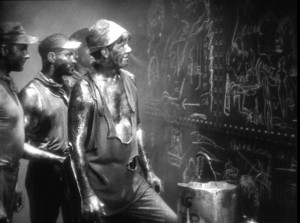
By setting the story in “the days before fuel made stoking a lady’s job” and before “commerce and reform” had cleaned up the waterfront, Sternberg is able to create—as he would often do—a world all its own in which to play out the drama. It’s a world of fog and mist, of fishing nets and rough wharves, of waterfront dives and ladies of easy virtue. It is, in many ways, the world of Sternberg’s mind—possibly more so than any we have previously seen in his films. It exists somewhere between reality and an imagined world, and somewhere between cheap melodrama and poetry. There are later films—Shanghai Express (1932) and The Scarlet Empress (1934)—where Sternberg would create even more elaborately separate worlds, but a good deal of that mindset is already here. There even the almost fetishistic little touches like the crude pornographic chalk drawings on the wall in the ship’s furnace room. There’s a touch of the exotic in its unfamliarity, and decidedly erotic in tone. In short its Sternberg. In this case, it’s Sternberg at his earthiest.
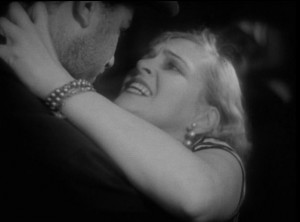
The chalk drawings and the undisguised raw sexuality of Olga Baclanova’s (here billed simply as Baclanova) dance-hall “hostess” are all in play before anything remotely resembling a plot is introduced. In some ways, Baclanova—who most people know only from Freaks (1932)—is the most interesting character in the film. Like most of the characters, she isn’t even given a name, but is billed simply as the wife of the Third Engineer (Mitchell Lewis), who is the closest thing the film has to a villain. No sooner have we met her with a prospective client on the dance floor, than she spots her errant husband in the bar with another woman.
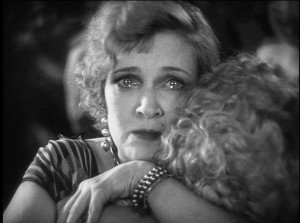
We pick up her story on the fly—married, abandonned, descended to her current level, but still with a passion (of a love/hate variety) for her husband. She’s more complex—within the confines of pulp fiction inscrutablility of Sternberg—than anyone else in the film. She’s hard as nails, but apt to turn inexplicably sentimental without notice. She’s at the end of her rope, but takes a strange, almost motherly, interest in the slightly more innocent character of Mae (Compson)—in whom she can glimpse something of herself in earlier days. The shot of Baclanova with tears in her eyes over this girl is probably the most moving in the film.
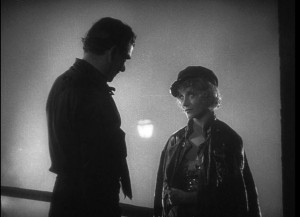
The character of Mae—actually billed on the film simply as “The Girl”—is introduced in a wavering watery reflection as she stands at the edge of the pier, deciding to thrown herself in. Fortunately for her, she does this just as Bill (Bancroft) is passing on his way for a night out at the waterfront dive. He’s somewhat typical of the good-hearted roughneck he played in other Sternberg pictures, so it’s no surprise that he rescues her and takes her to the bar, insisting on getting her a room upstairs to dry out and rest in. His motives are unclear—probably even to him—but they’re also better than he thinks they are. In the end, they will be even better than that—in large measure because it’s the kind of story that always drew Sternberg, a man whose cynicism was largely the protection of an obvious sentimentalist and romantic against the world.
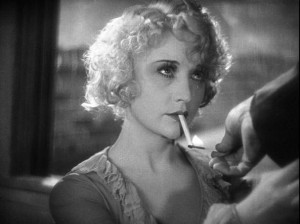
Everything that follows is grounded in the interaction of these few characters. Everyone else—with the possible exception of the minister who performs the marriage, Hymn Book Harry (Gustav von Seyffertitz in an uncharacteristically sympathetic role)—is little more than atmosphere. The drama is quite simple, quite elemental, and everything is played out in looks. In no other Sternberg film is so much conveyed by looks. Here, the eyes are everything—from exchanged looks, to appraising looks, to hopeful looks, to longing looks, to hopeless looks. The effect is often electric, and always effective as drama. Baclanova and Compson in particular express more with their eyes than many actors do with pages of dialogue. Even within the realm of the silent film where particular emphasis was placed on facial expression, there is something unique—almost indefinable, but clearly obsessive—about the way The Docks of New York makes use of the eyes.


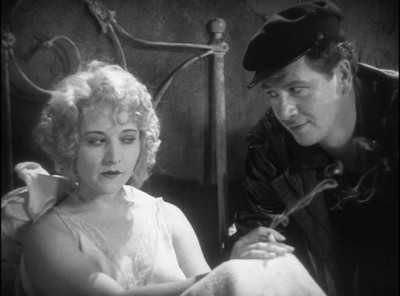
I’ve never seen a silent film before & am looking forward to this! (Coincidentally, the film co-stars George Bancroft & my last name is Bancroft as well.) I wanted to ask a couple questions about the Film Society’s Tuesday screenings at the Carolina. I figure at least a few other people out there may also be interested in a little more information. It’s at 8pm every Tuesday, but when should we show up? Is attendance ever so high that there is no seating left? There’s no cost for a ticket but food & drinks are available from the theater? There is a discussion afterward? Is it open forum or more lecture style & around how long does that usually last? I suppose I could’ve e-mailed the appropriate person (perhaps Ken or the Carolina) w/ these questions, but as I said before, it’s likely there are others who may benefit from this information. Thanks a lot & see you Tuesday! :)
Well, let’s see…It’s hard to say when you should show up, since attendance is very variable and impossible to predict. Some people get there as early as 7 p.m., but 7:30 is usually quite early enough. That said, there have been occasions when people are sitting on the floor (I do not expect that with this). Admission is free — just come upstairs to the Cinema Lounge — but, yes, you can of course buy food and drink from the theater. The format is quite relaxed. Usually I introduce the movie (sometimes Justin does), but anybody can ask questions or interject something. There’s no structured after movie discussion, but people often congregate in the bar area and talk after the movie. Since you’re obviously new to the screenings, drop by and introduce yourself. I’m usually leaning against the end of the bar by 7.